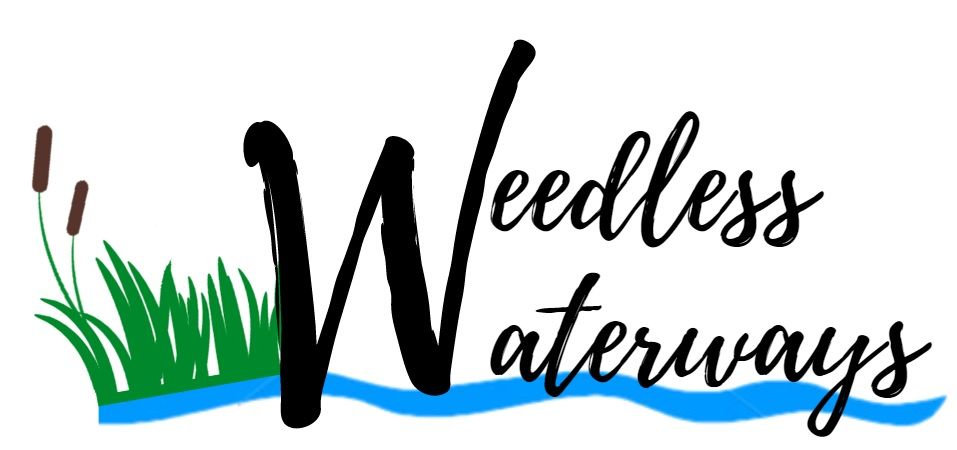Invasive water Weed Species
Invasive aquatic weeds in Southern Ontario disrupt the natural balance of water bodies, threatening biodiversity and ecosystem health. Their rapid spread across lakes and rivers hinders recreational activities and alters habitats. Conservation efforts involve vigilant monitoring, herbicide use, manual removal, and educational initiatives aimed at preventing their introduction and further spread, protecting the delicate aquatic ecosystems of the region.
There are fewer regulations for invasive species despite their detrimental impact on natural ecosystems and plant life. Removing these species does not necessitate permits and can be conducted at any time.
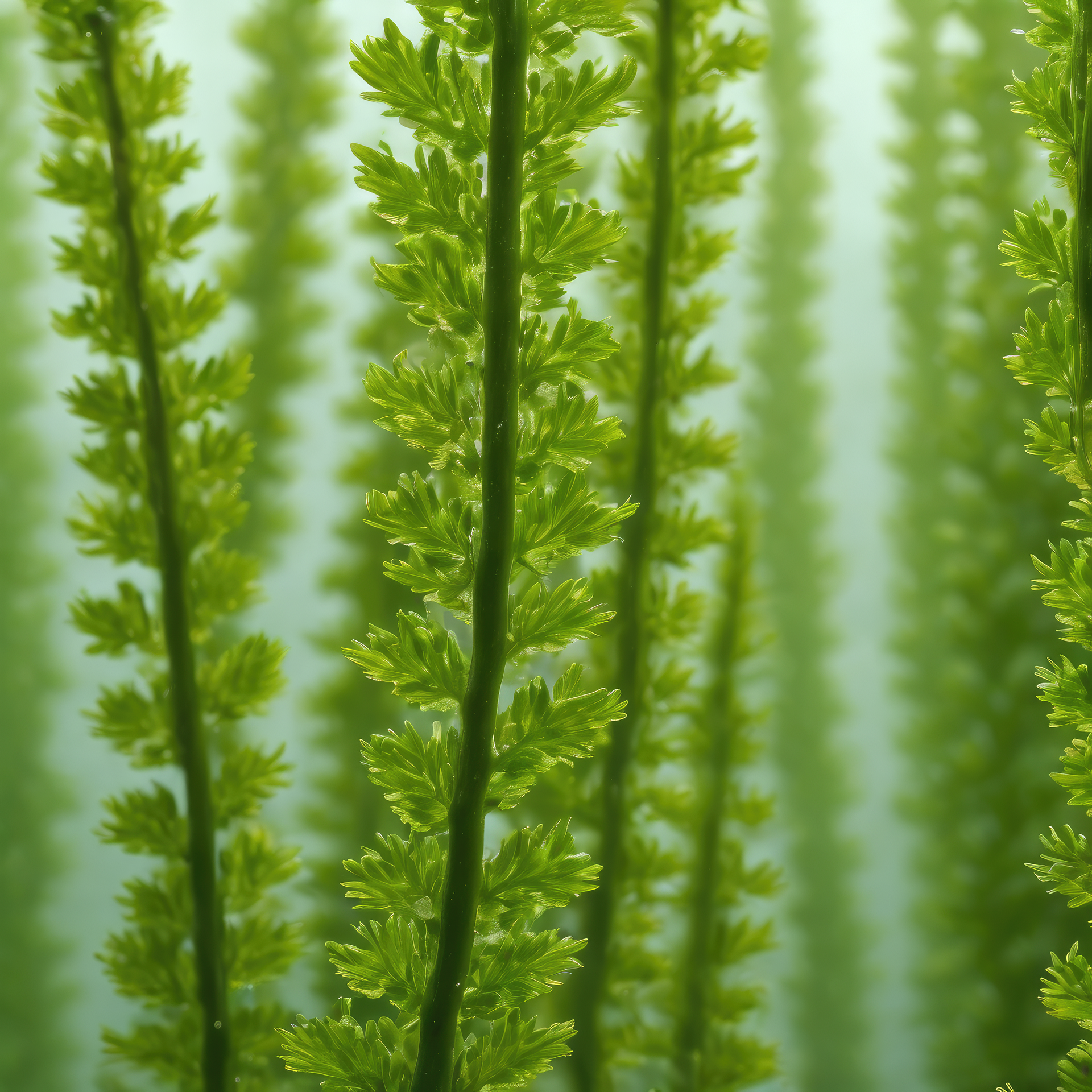
Brazilian Elodea
Commonly referred to as Brazilian waterweed, this species possesses a rapid spreading capability, thriving in freshwater environments such as lakes, wetlands, ponds, and sluggish streams. Notably, it exhibits resilience, enduring the winter months beneath ice cover. Predominantly rooted at depths ranging from 1 to 2 meters, it's also found in deeper waters, reaching depths of up to 6 meters.
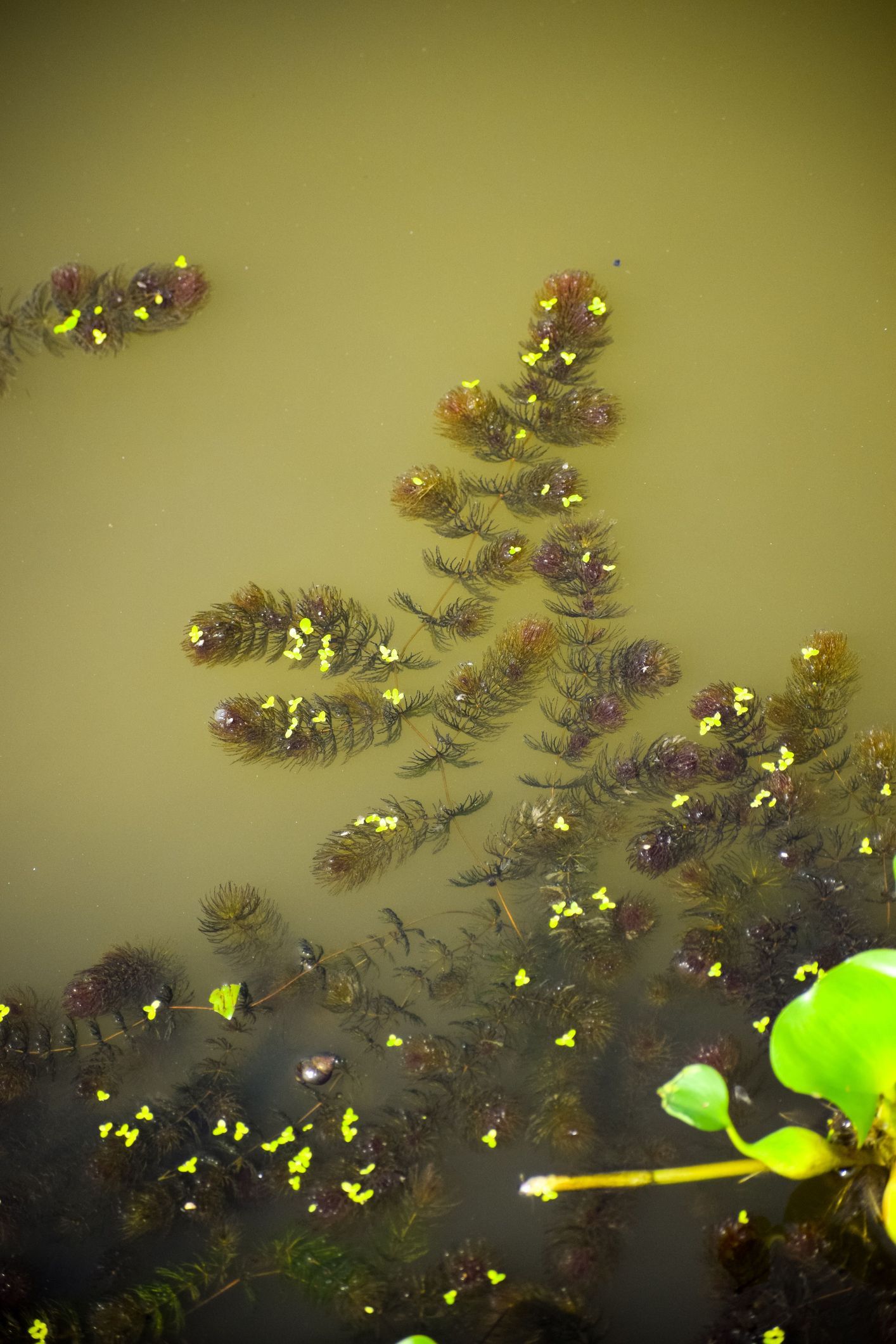
Eurasian Water-milfoil
Eurasian water-milfoil (Myriophyllum spicatum) is an invasive aquatic plant prevalent in many freshwater bodies across North America, including Southern Ontario. Recognized by its feather-like leaves arranged in whorls along its stems, this aggressive species forms dense mats on the water surface, impeding water flow and sunlight penetration. Its rapid growth outcompetes native aquatic plants, altering the ecosystem dynamics and reducing biodiversity. Eurasian water-milfoil spreads easily through fragmentation, wherein small plant fragments can take root and grow, contributing to its swift colonization of lakes, ponds, and slow-moving streams. Efforts to control its spread often involve manual or mechanical removal, herbicide application, and promoting awareness to prevent its introduction and further proliferation in waterways.
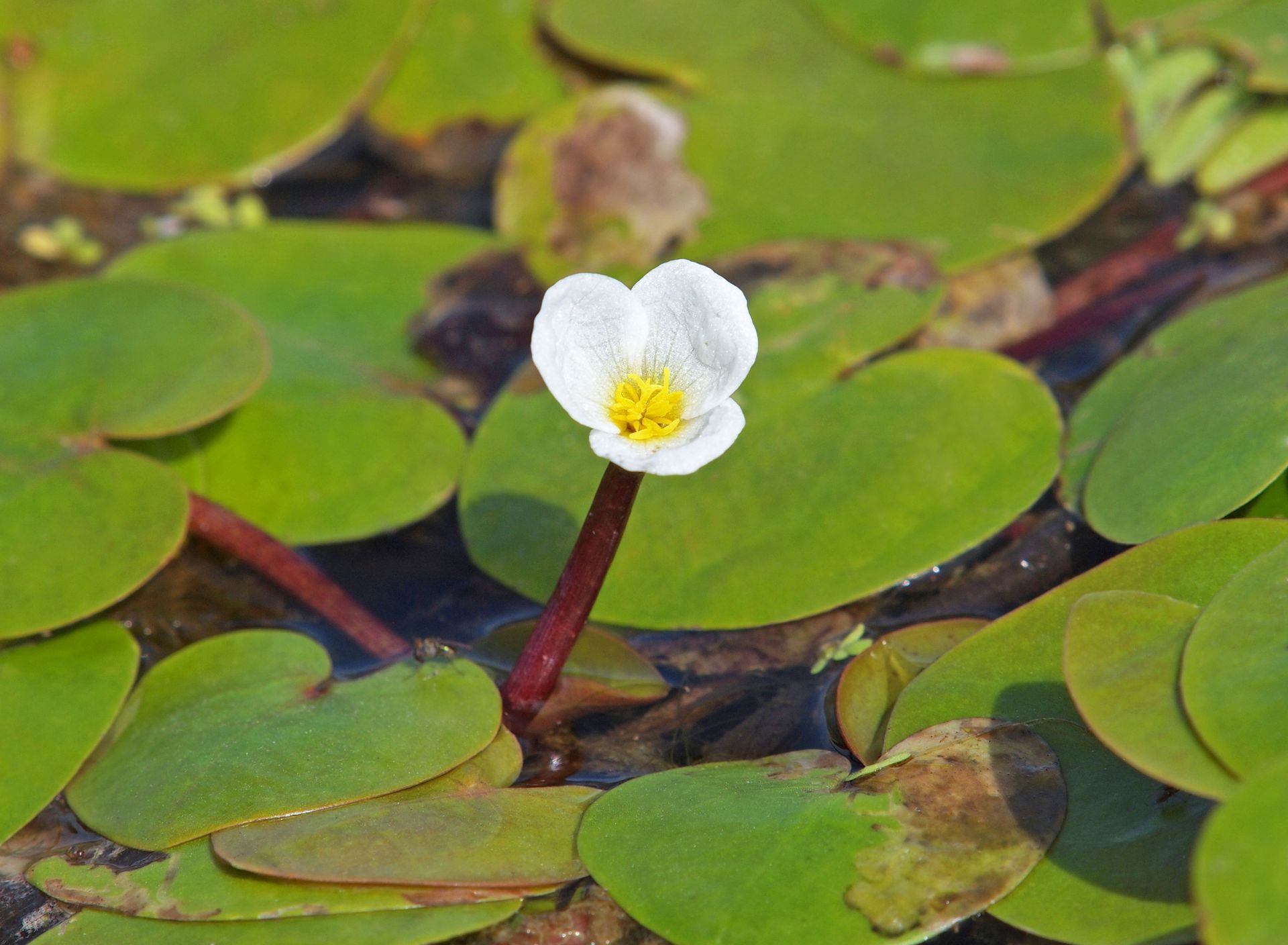
European Frog-bit
European frog-bit (Hydrocharis morsus-ranae) is an invasive floating aquatic plant recognized by its heart-shaped leaves and small white flowers. This species poses a threat to water bodies in regions like Southern Ontario. Forming dense floating mats on the water surface, European frog-bit obstructs sunlight and oxygen, impacting native aquatic plants and fish populations. This invasive plant spreads rapidly, reproducing through vegetative growth and seeds, enabling it to dominate waterways and disrupt the natural balance of ecosystems. Management strategies typically involve manual removal, herbicide treatments, and preventive measures to limit its introduction into new water bodies and mitigate its spread.
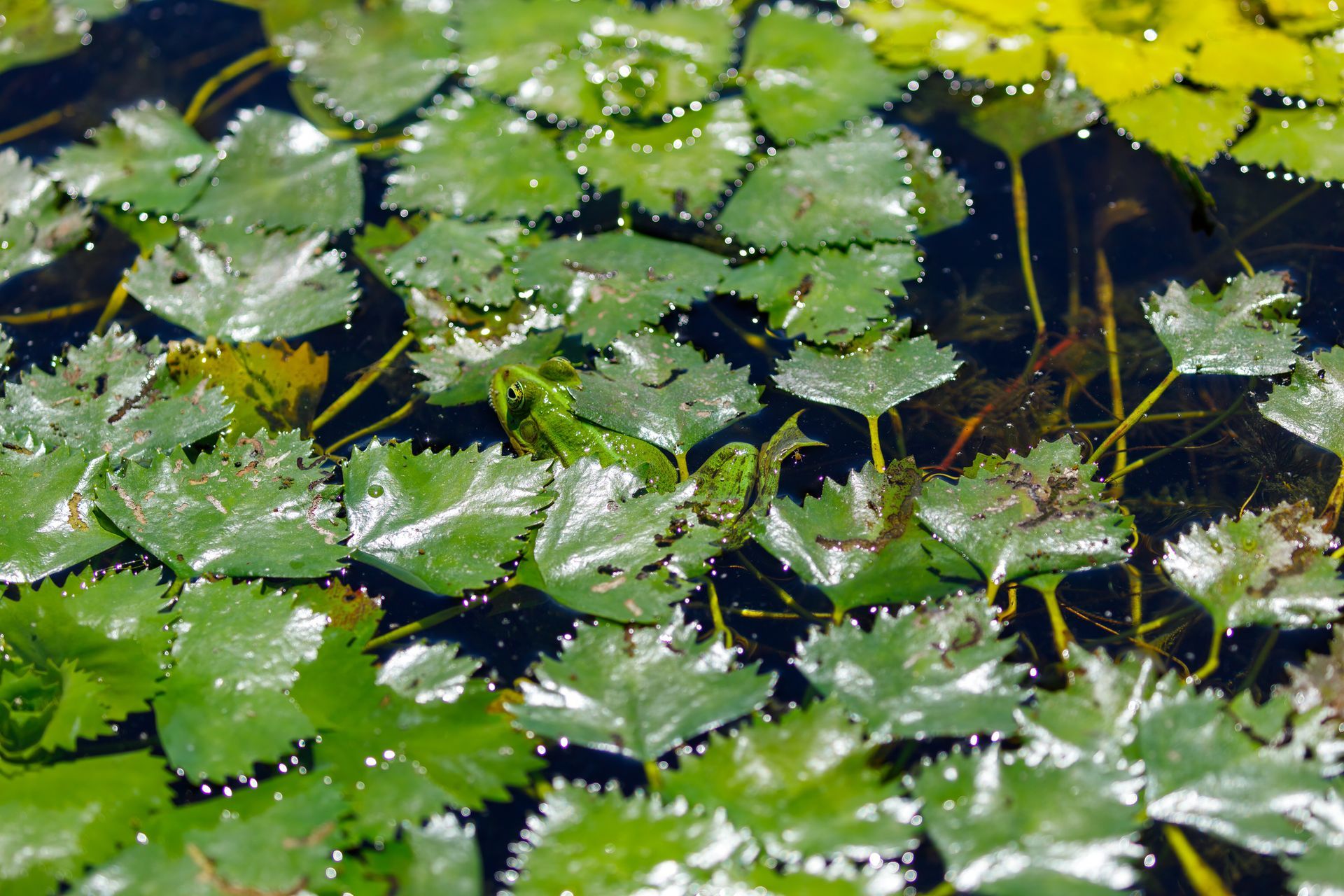
European Water Chestnut
European water chestnut (Trapa natans) is an invasive aquatic plant recognized by its floating rosettes of serrated leaves and small, spiny nuts. This species poses a significant threat to water bodies in regions like Southern Ontario. Its dense floating mats inhibit sunlight penetration, diminish oxygen levels, and impede water flow, causing harm to native aquatic plants and wildlife. European water chestnut reproduces prolifically through seeds, and each plant can produce a considerable number of seeds, facilitating its rapid spread across lakes, ponds, and slow-moving waterways. Management efforts often involve manual removal, herbicide application, and preventive measures to curtail its establishment in new areas and protect the ecological balance of affected water bodies.
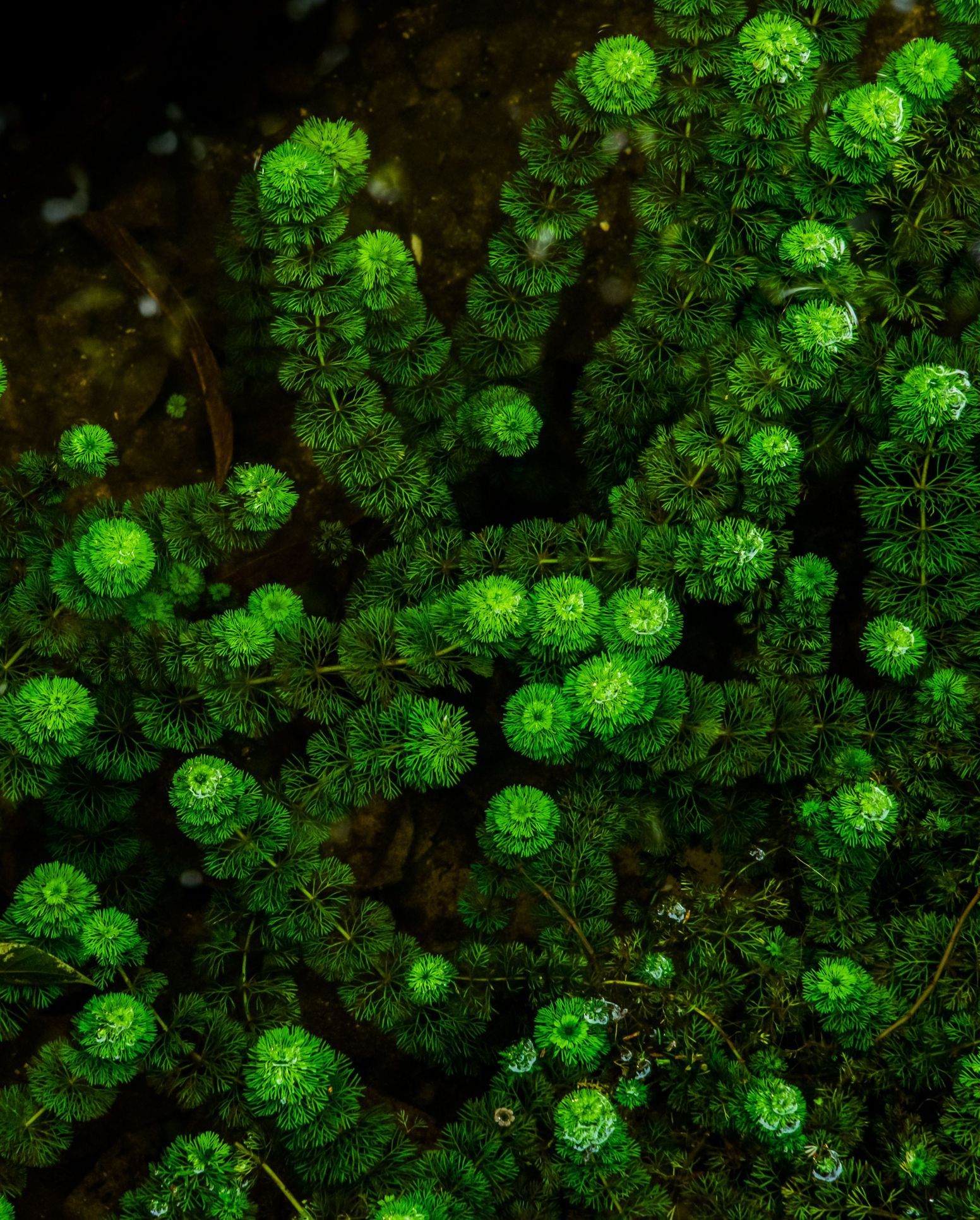
Fanwort
Fanwort (Cabomba caroliniana) is an invasive aquatic plant commonly found in water bodies across North America, including regions like Southern Ontario. Recognized by its delicate, finely divided leaves arranged in a fan-like pattern, fanwort forms dense underwater mats, hindering water flow and shading out native aquatic vegetation. Its rapid growth outcompetes indigenous plant species, altering ecosystems and impacting aquatic life. This invasive plant reproduces vegetatively and through seeds, enabling its rapid colonization of lakes, ponds, and slow-moving streams. Management strategies typically involve manual or mechanical removal, herbicide treatments, and preventive measures to limit its introduction into new water bodies and curb its spread.
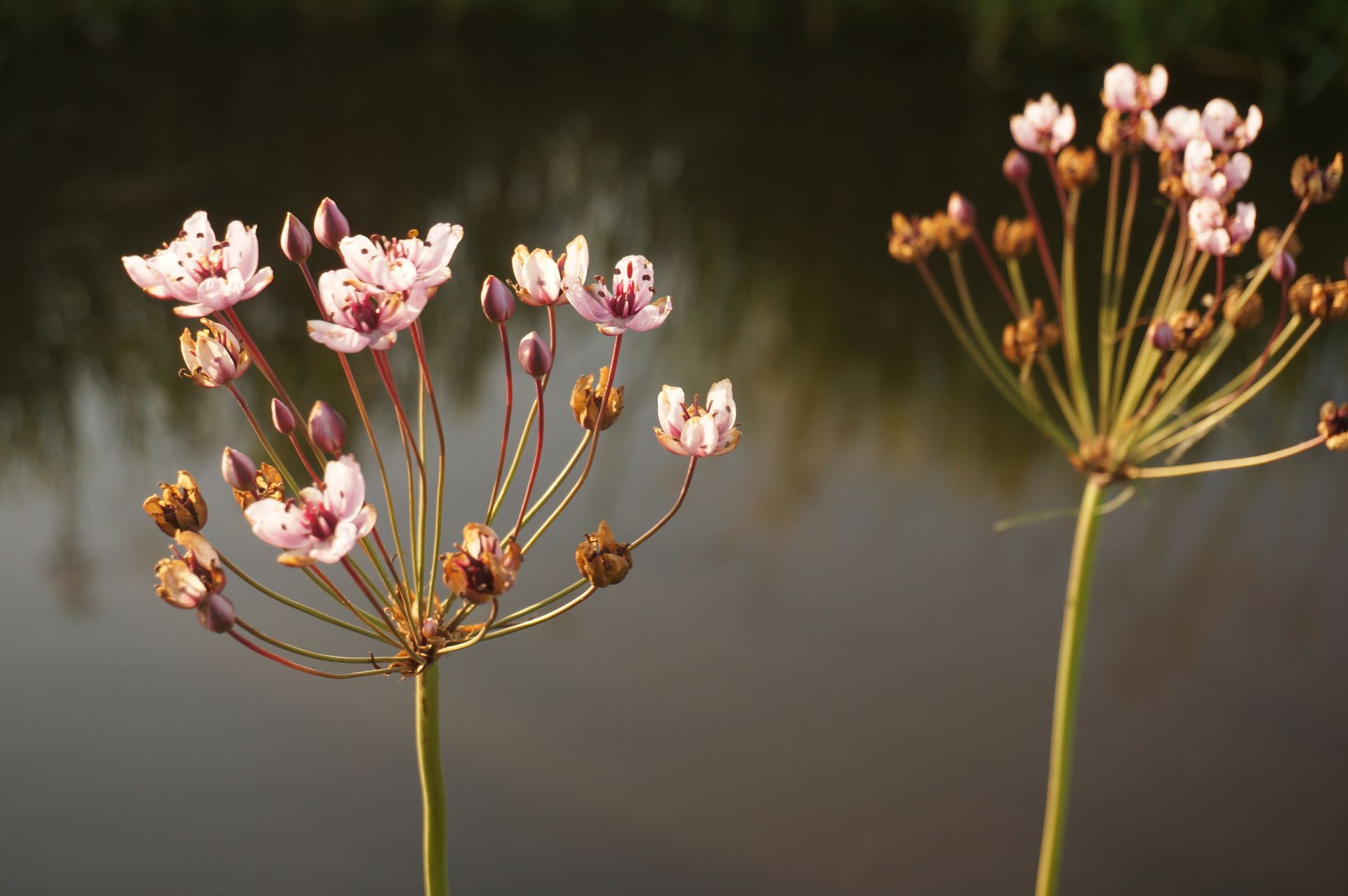
Flowering Rush
Flowering rush (Butomus umbellatus) is an invasive aquatic plant commonly found in wetlands, lakes, and slow-moving streams, including regions of Southern Ontario. Recognizable by its striking pink clusters of flowers atop tall stems, this invasive species forms dense stands that impede water flow, reduce oxygen levels, and disrupt native aquatic habitats. Flowering rush reproduces through seeds and rhizomes, rapidly spreading and outcompeting native plants, altering the ecosystem balance. Its aggressive growth can degrade water quality, restrict navigation, and negatively impact aquatic biodiversity. Control efforts typically involve manual or mechanical removal, herbicide treatments, and preventative measures aimed at preventing its introduction and minimizing its spread in affected water bodies.

Parrot Feather
Parrot feather (Myriophyllum aquaticum) is an invasive aquatic plant often found in water bodies across North America, including regions like Southern Ontario. Identified by its feathery, bright green foliage arranged in whorls along its stems, this invasive species forms dense mats on the water surface, impeding sunlight penetration and hindering native aquatic plant growth. Parrot feather's rapid growth outcompetes indigenous vegetation, altering ecosystems and impacting aquatic habitats. The plant reproduces through fragmentation, with small stem fragments capable of establishing new growth, facilitating its swift colonization of lakes, ponds, and slow-moving streams. Efforts to control its spread often involve manual or mechanical removal, herbicide application, and preventive measures to curb its introduction into new water bodies and mitigate its impact on the aquatic environment.
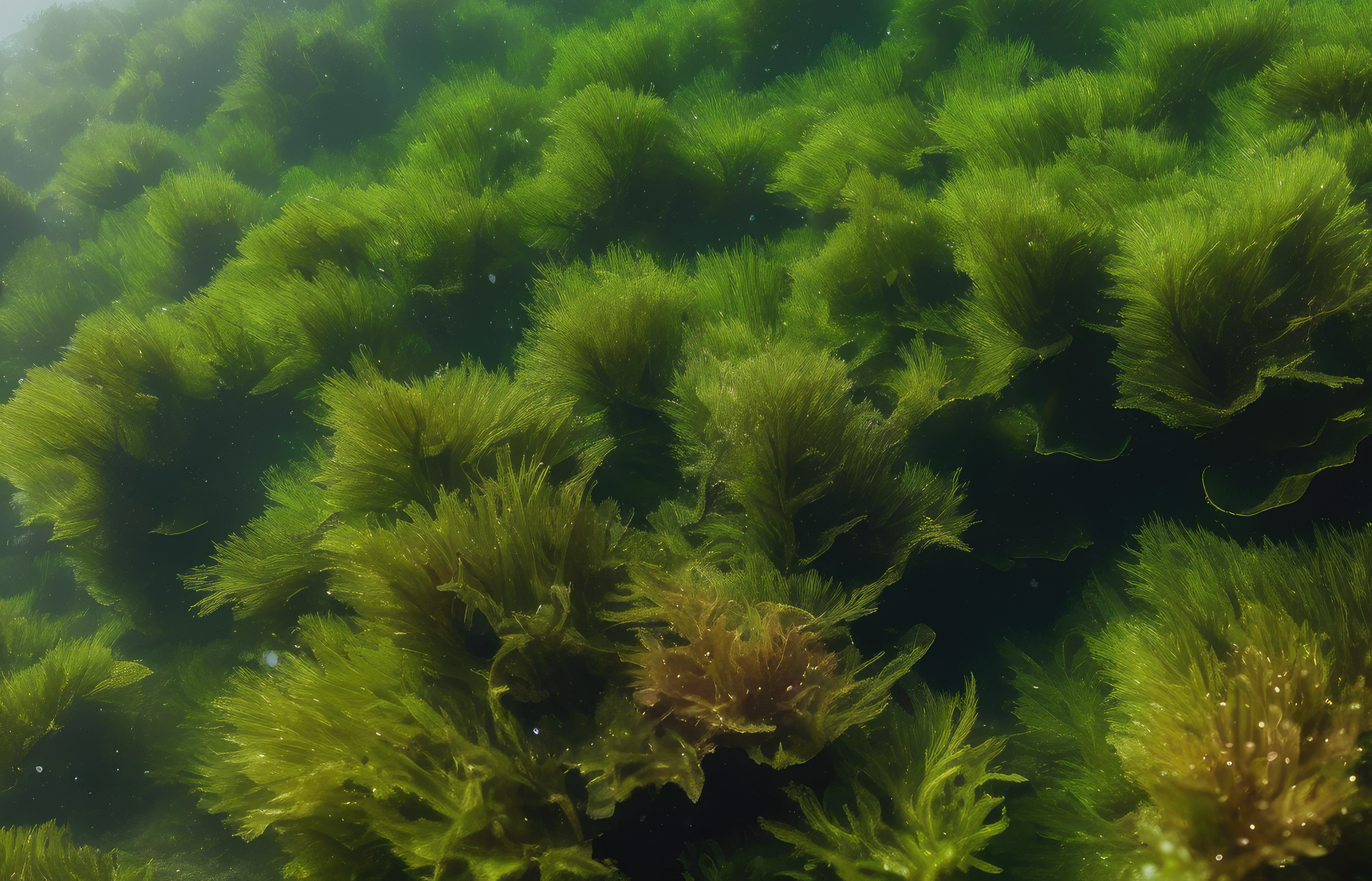
Starry Stonewort
Starry stonewort (Nitellopsis obtusa) is an invasive macroalgae found in water bodies, including those in Southern Ontario. Recognizable by its star-shaped bulbils and long, slender stems, this invasive species forms dense mats that impede water flow, restrict native aquatic plants, and alter the ecosystem dynamics. Starry stonewort reproduces through fragmentation and bulbils, enabling rapid colonization of lakes, ponds, and slow-moving waterways. Its aggressive growth outcompetes indigenous vegetation, disrupting the natural balance and biodiversity of aquatic habitats. Control strategies often involve manual removal, herbicide treatments, and preventive measures to limit its spread and protect the integrity of affected water bodies.
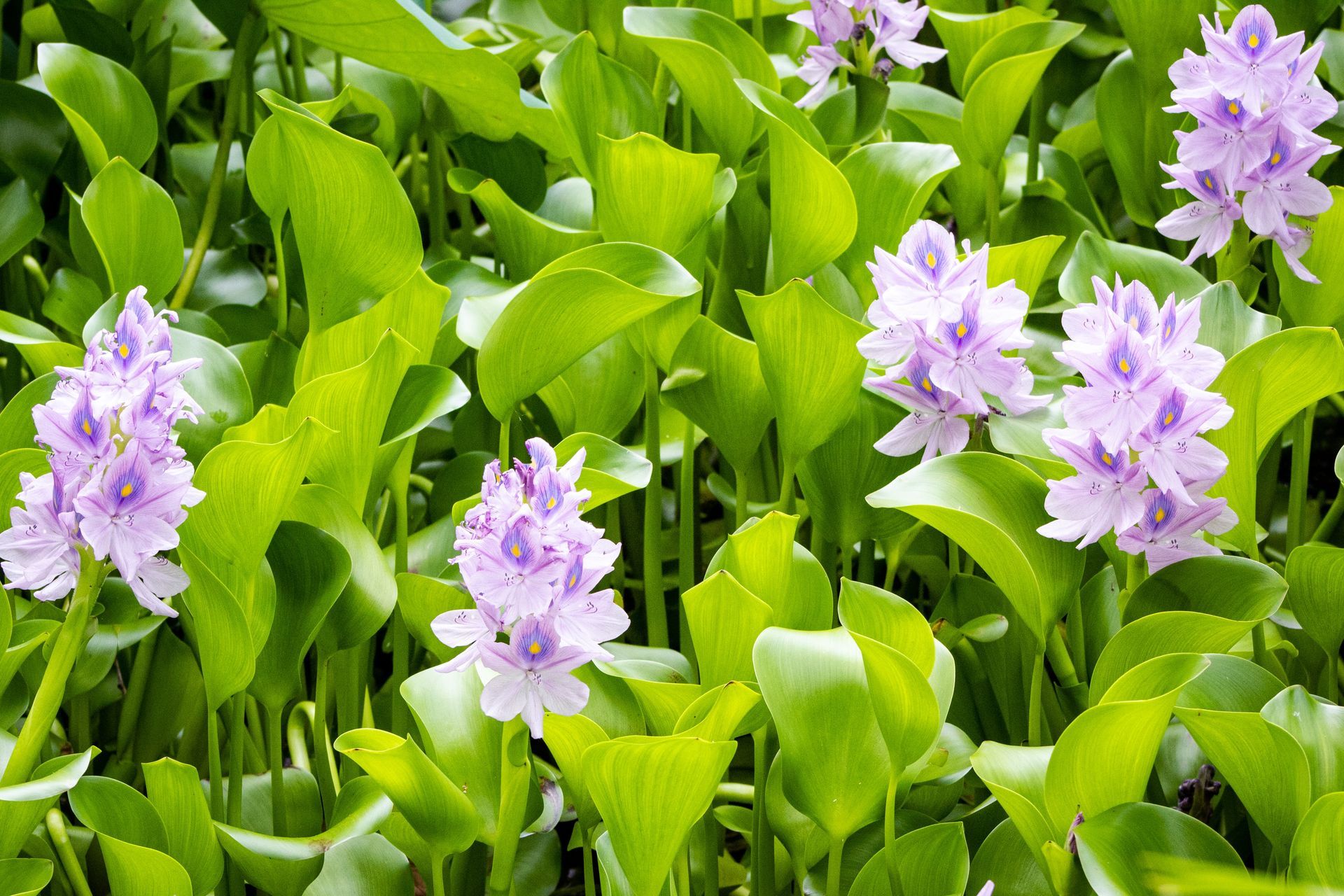
Water Hyacinth
Water hyacinth (Eichhornia crassipes) is an invasive aquatic plant prevalent in warmer climates worldwide, including regions susceptible to its growth in Southern Ontario. Recognized by its glossy, rounded leaves and lavender flowers, this invasive species forms dense mats on the water surface, impeding sunlight penetration and hindering native aquatic plants. Its rapid growth rate, aided by prolific reproduction through seeds and vegetative propagation, enables water hyacinth to swiftly dominate lakes, ponds, and slow-moving streams. This aggressive growth disrupts natural ecosystems, alters water chemistry, reduces oxygen levels, and impedes aquatic life. Control measures often involve manual removal, herbicide application, and preventive actions aimed at curtailing its establishment in new water bodies and managing its spread.
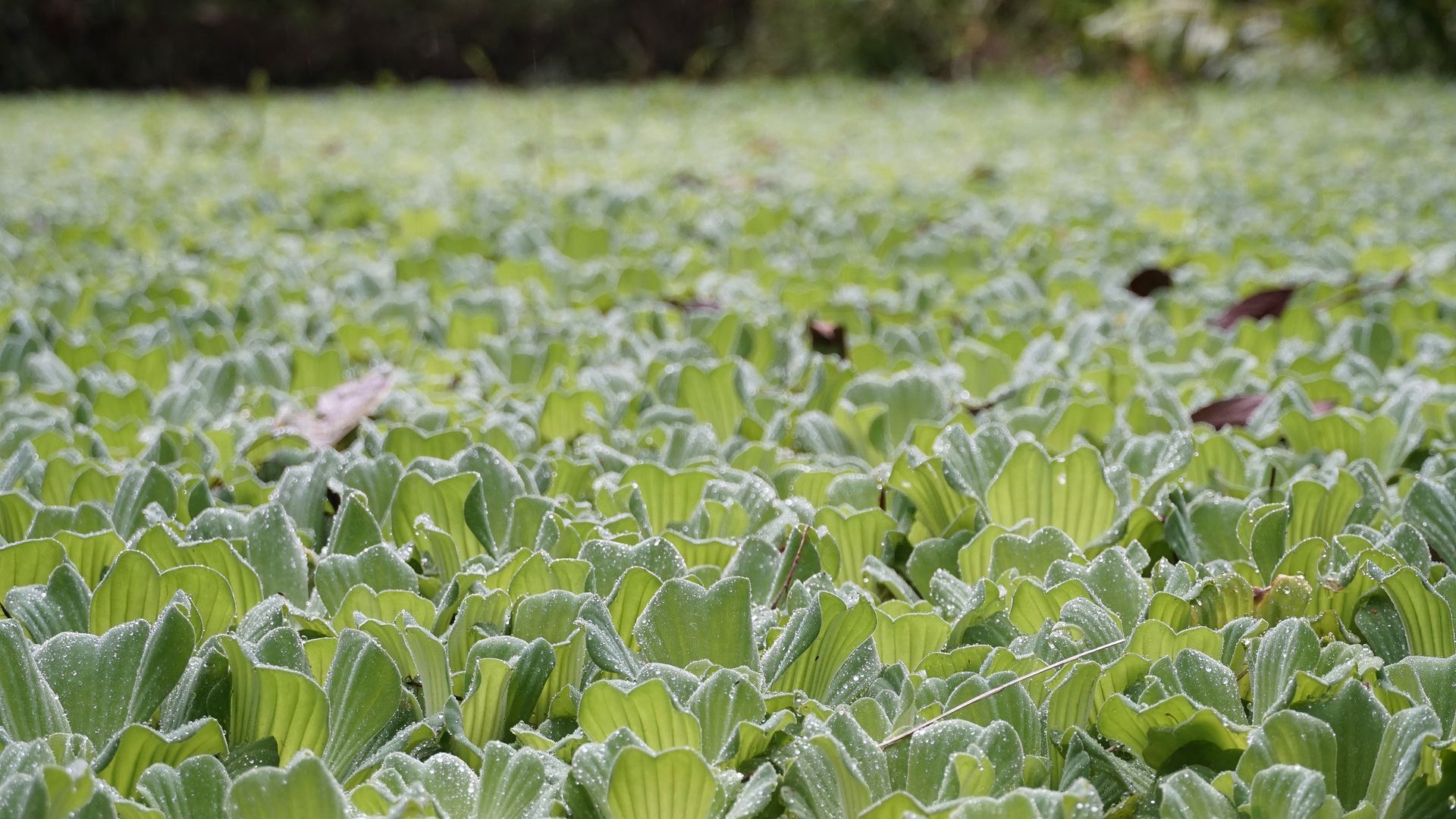
Water Lettuce
Water lettuce (Pistia stratiotes) is an invasive floating aquatic plant recognized by its rosette-shaped clusters of light green leaves. This invasive species poses a threat to water bodies in various regions, including parts of Southern Ontario. Forming dense floating mats on the water surface, water lettuce obstructs sunlight and oxygen, impacting native aquatic plants and fish populations. Its rapid growth and prolific reproduction through daughter plants and seeds allow it to dominate waterways and disrupt the natural balance of ecosystems. Management strategies typically involve manual removal, herbicide treatments, and preventive measures aimed at limiting its introduction into new water bodies and mitigating its spread.
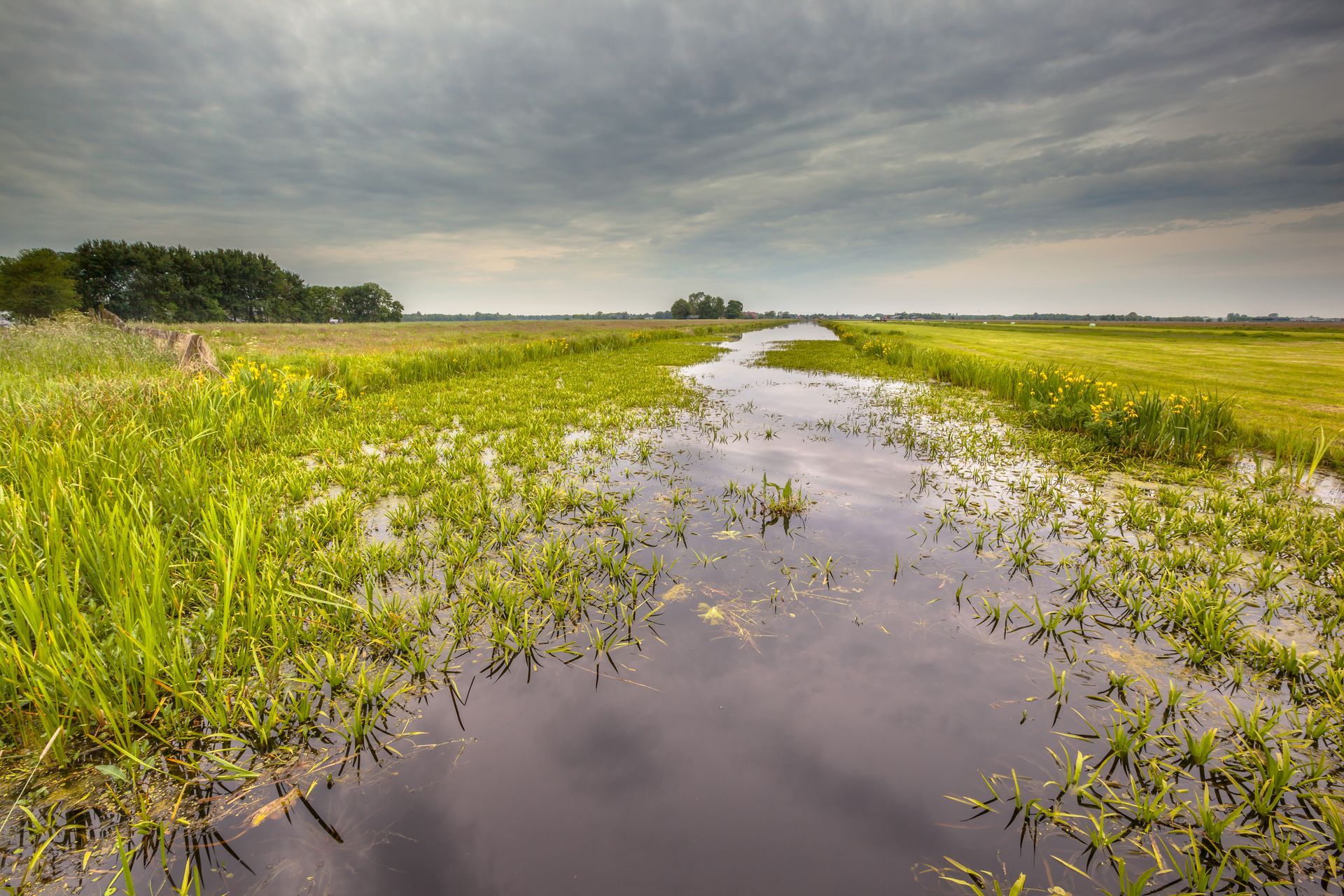
Water Soldier
As a prohibited invasive species under the Invasive Species Act (https://www.ontario.ca/page/invasive-species-ontario) action needs to be taken immediately with Water Soldier weeds. Just like many of the other invasive weeds, this weed cause dense mats that can block water flow and alter the underwater chemistry and harm ecosystems and recreational activities.
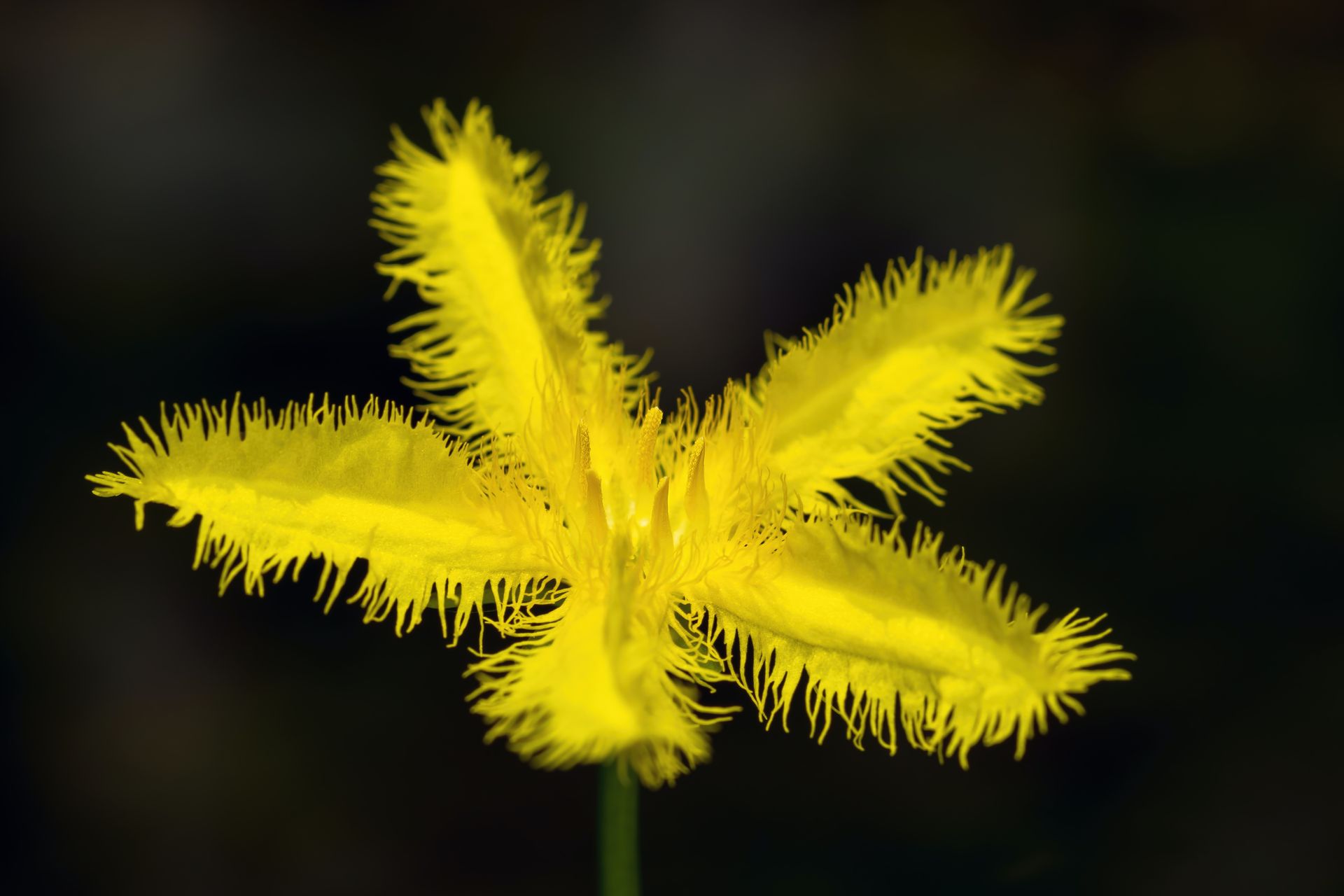
Yellow Floating-Heart
Found in slow moving waters about 0.5 to 4m deep, Yellow Floating-Heart is an invasive species that spreads via waterways and boats. It causes damage to wildlife by degrading their habitats and blocks out native plants from growing below making recreational activities difficult to enjoy due to the dense mats formed.
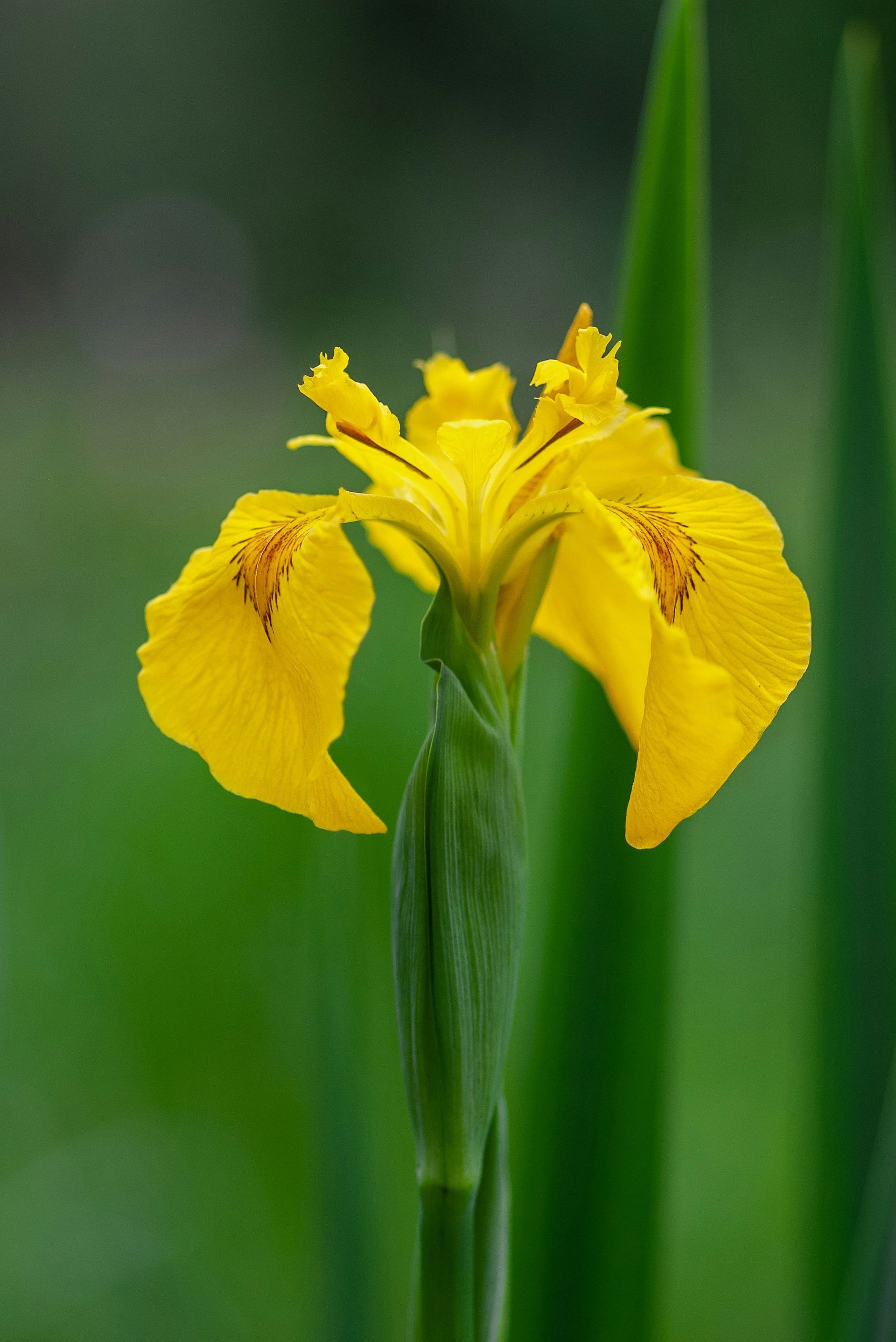
Yellow Iris
Due to it’s ability to absorb heavy metals Yellow Iris is often planted in wastewater ponds but has slowly spread to other lakes and rivers. By forming thick mats, Yellow Iris blocks out natural plants and wildlife, destroying ecosystems and blocking waterways used for recreational activities. It is also poisonous to humans so removing Yellow Iris is of utmost importance.
Let's make your waterways beautiful again
This is a paragraph. Writing in paragraphs lets visitors find what they are looking for quickly and easily.
This is a paragraph. Writing in paragraphs lets visitors find what they are looking for quickly and easily.
This is a paragraph. Writing in paragraphs lets visitors find what they are looking for quickly and easily.
This is a paragraph. Writing in paragraphs lets visitors find what they are looking for quickly and easily.
This is a paragraph. Writing in paragraphs lets visitors find what they are looking for quickly and easily.
Jane Faber, New York
This is a paragraph. Writing in paragraphs lets visitors find what they are looking for quickly and easily.
This is a paragraph. Writing in paragraphs lets visitors find what they are looking for quickly and easily.
Jane Faber, New York
Jane Faber, New York
Please reach out to us for an estimate today. We look forward to talking with you.
Weedless Waterways
Contact Us
Thank you for contacting us. We will get back to you as soon as possible.
All Rights Reserved | Weedless Waterways
